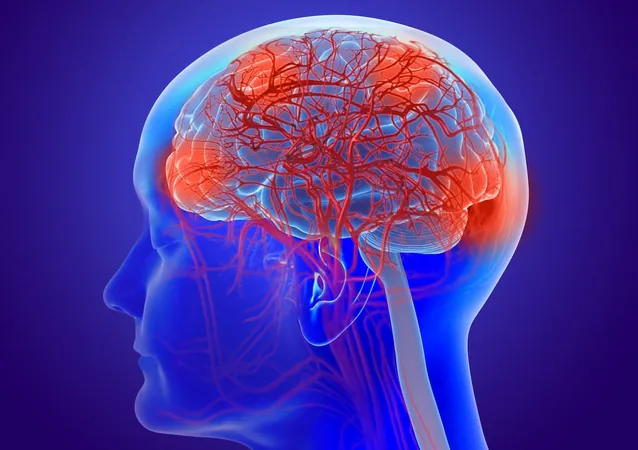
Unveiling a Rare Case of Glioblastoma: A Deep Dive into Molecular Mysteries
2025-09-17
Author: Yu
The Case of an Unusual Glioblastoma Diagnosis
Meet a 76-year-old man whose life took a sudden turn after a fall led to a shocking discovery. Initially evaluated for a minor head injury, his ongoing symptoms of persistent headaches and dizziness hinted at something much more sinister. A brain MRI revealed subtle yet concerning changes, prompting a referral to neurosurgery for further investigation.
Unexpected Surgical Findings
Undergoing a transsylvian surgical approach, what was anticipated as a straightforward correction turned into a complex picture. Intraoperative investigations indicated an infiltrating glioma, but without high-grade features typical of aggressive tumors. Despite attempting near-total resection, the presence of critical vascular structures prevented complete removal.
The Molecular Revelation
Post-surgery, the patient faced complications, but the real story was unfolding at the molecular level. A thorough analysis using next-generation sequencing unearthed startling findings: a TERT mutation, significant EGFR amplification, and CDKN2A deletion, classifying the tumor as glioblastoma, IDH wild-type, WHO grade 4. Methylation studies supported this diagnosis with high confidence.
Challenging Norms in Glioblastoma Diagnosis
This case presents a fascinating challenge to conventional wisdom. Despite histological atypical characteristics like a low Ki-67 proliferation index and absence of common features, molecular profiling clearly indicated a high-grade tumor. Such unique clinical behaviors, coupled with the lack of progression over an extended period, are both extraordinary and provoke questions about the evolution of gliomas.
The Importance of Molecular Profiling
The integration of advanced genetic profiling—namely, next-generation sequencing and methylation analysis—was essential in understanding this case. It revealed a tumor with almost benign histological traits yet carrying the malignant potential of a glioblastoma. The patient's subsequent treatment comprised radiation therapy and chemotherapy, aiming to harness these insights for better outcomes.
Looking to the Future
This case may serve as an early indication of a glioblastoma precursor or a unique variant that develops more slowly. Without common mutations like TP53, it suggests a potential pathway of de novo glioblastoma progression. Such discoveries warrant further investigation into the behavior and characteristics of atypical gliomas, promising to enrich our understanding and refine treatment strategies.


 Brasil (PT)
Brasil (PT)
 Canada (EN)
Canada (EN)
 Chile (ES)
Chile (ES)
 Česko (CS)
Česko (CS)
 대한민국 (KO)
대한민국 (KO)
 España (ES)
España (ES)
 France (FR)
France (FR)
 Hong Kong (EN)
Hong Kong (EN)
 Italia (IT)
Italia (IT)
 日本 (JA)
日本 (JA)
 Magyarország (HU)
Magyarország (HU)
 Norge (NO)
Norge (NO)
 Polska (PL)
Polska (PL)
 Schweiz (DE)
Schweiz (DE)
 Singapore (EN)
Singapore (EN)
 Sverige (SV)
Sverige (SV)
 Suomi (FI)
Suomi (FI)
 Türkiye (TR)
Türkiye (TR)
 الإمارات العربية المتحدة (AR)
الإمارات العربية المتحدة (AR)